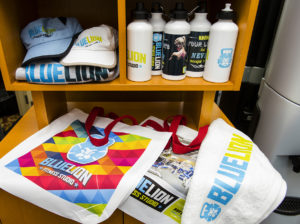
Ingrid Van Loocke, channel marketing manager for Sawgrass, explores the challenges surrounding print on demand and the solutions to this.
Demand for personalised and custom products in small orders is growing each year. This poses challenges to those in the imprinting industry whose business centres on analogue technologies, such as screen printing or embroidery.
However, this is not the case for short runs. The amount of time, materials and preparation needed to set up production makes earning a profit very difficult. As a result, many businesses are turning away potential orders and business building opportunities with new and existing customers.
If being able to take on short run and on demand jobs would give your business an added boost, you should consider investigating dye sublimation. This digital product decorating technology is revolutionising the imprint and digital decorating industries by offering low cost of entry, quick ROI and very profitable print on demand solutions.
Here is a look at what dye sublimation is and how it could be the perfect solution for providing print on demand service to your customers.
What is sublimation?
Sublimation, also called dye sublimation, is a digital decorating technology that embeds high definition, full colour images into the surfaces of a wide variety of products. These substrates need to be made of polymers or polyester. They can also have a polymer coating designed for the sublimation process.
One of the things that makes sublimation unique is the chemistry that goes on behind the scene of the simple three step process for imprinting: create, print and press.
- Create: Work with popular desktop graphic software (Adobe products, CorelDraw) or a sublimation specific design suite, like Sawgrass’ CreativeStudio Online Designer, to create the graphics your customers need for their product.
- Print: Use a sublimation system – specific printers, inks and transfer paper designed for use in the sublimation process – to print your artwork. Sublimation inks consist of dye solids suspended in a carrier fluid. Only the print heads in printers designated for sublimation can handle the high viscosity fluid that passes to the transfer paper, as well as produce the high definition images sublimation is known for.
- Press: Attach your transfer to the substrate and place both in a heat press. The high temperature and pressure of the press will cause the sublimation process to happen, embedding the dyes from the paper into the surface of the substrate. Unlike other transfer technologies, only the dyes are left behind.
During the sublimation process, the dye solids in the transfer paper transform into gasses, while the polymers on the substrate open up. The pressure from the press pushes the gasses into the polymers. Upon cooling, the polymers close and the gasses turn back into solids, encased within the substrate’s surface. This is how sublimation creates permanent, high definition colouration that does not chip or wash away. Your designs become part of the product itself and are presented in stunning colour and clarity.
The print on demand solution
There are several reasons why sublimation enables businesses to offer profitable print on demand services. The foremost is the simplicity and speed of the three step process explained above. The artwork is created and printed digitally. There is no need for colour separations, screen burning or other manual setup, which can take a lot of time away from profit-earning production. There is also not significant downtime while preparing to print, as with the custom fabric, decorated garment, signage and promotional product production industries. With sublimation, you can quickly adapt templates for popular products, add names or photos and generate custom orders for on-the-spot orders.
In terms of actual production, sublimation is incredibly efficient. Print speeds are less than a minute in many cases, and most substrates press in less than two minutes. And because printing is faster than pressing, you will always have the next transfer ready before the previous pressing cycle is complete, which leads to an efficient production system that maximises output.
You may ask, how does this impact profitability? Your production uptime directly translates into profit margins. The more time you spend preparing to print, the more expensive the processes is for you. Because sublimation’s print and press production takes only a few minutes per item, you can produce more per hour and easily accept last minute and single product orders. The setup and production time is the same whether you make one or 1,000. Being able to accept these types of orders increases your sales volume and profit at the same time.
Investment and profitability
Sublimation is one of the most economical imprinting technologies on the market, as it consists of a computer (which you likely have), a sublimation printer, inks, transfer paper and a heat press. Entry-level systems range between £550 and £1,300.
Your greatest expense will be the heat press. A good-quality heat press will give you the best results and should cost between £550 and £1,100. In all, your total investment to start sublimating should be in the area of £550 (without a heat press). Now, compared to other technologies, such as a laser engraving machine or a direct to garment printer, sublimation is a very economical choice.
ROI is also much quicker, given this low cost of entry. Also, the quality of sublimation printing fetches premium prices, even though your costs are the same or even lower than other imprinting methods you already use. By selling your products for what the market will support, you maximise your profit potential on small run orders.
Final words
Digital printing is the way of the future, and sublimation technology is the answer so many imprinting businesses have been searching for. There is a lot of money to be made by accepting print on demand orders from new and existing customers.
Isn’t it time you looked into what sublimation could do for your business?
 Printwear & Promotion The Total Promotional Package
Printwear & Promotion The Total Promotional Package




